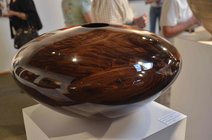- Joined
- Nov 1, 2013
- Messages
- 325
- Likes
- 739
- Location
- Gulfport, MS
- Website
- www.woodtreasuresbybreck.com
Hi ladies and gentlemen,
As always I am only interested in answers from people who actually have experience with the area of my question. I have learned over the many years that I have been a woodturner that there are as many ways to do the same thing as there are people. But what I am looking for is the finish that works the best for you. The sanding, the abrasive pastes, buffing I've got a good handle on that , I think. What confuses me is some use a sealer, other no. Some use a specific oil finish before buffing, that is what I am interested in. The plastic polishes work fine for resin I've read but not for wood. Some use OB shine juice, I just need to hear from some of you so I can quit researching and get to it. Thanks so much for these threads, over the years I have learned so much from my fellow turners!!!
As always I am only interested in answers from people who actually have experience with the area of my question. I have learned over the many years that I have been a woodturner that there are as many ways to do the same thing as there are people. But what I am looking for is the finish that works the best for you. The sanding, the abrasive pastes, buffing I've got a good handle on that , I think. What confuses me is some use a sealer, other no. Some use a specific oil finish before buffing, that is what I am interested in. The plastic polishes work fine for resin I've read but not for wood. Some use OB shine juice, I just need to hear from some of you so I can quit researching and get to it. Thanks so much for these threads, over the years I have learned so much from my fellow turners!!!




